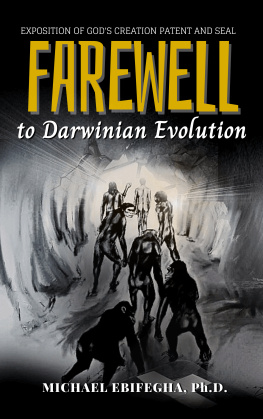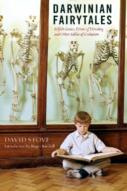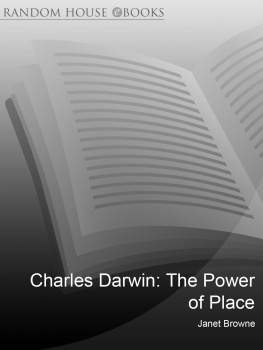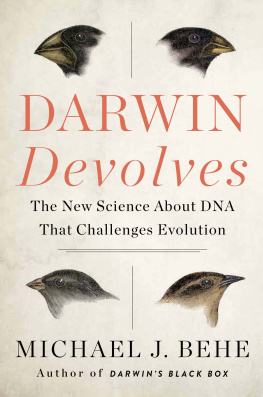DARWINIAN POPULATIONS
AND NATURAL SELECTION
DARWINIAN POPULATIONS AND NATURAL SELECTION
PETER GODFREY-SMITH


Great Clarendon Street, Oxford OX2 6DP
Oxford University Press is a department of the University of Oxford.
It furthers the Universitys objective of excellence in research, scholarship,
and education by publishing worldwide in
Oxford New York
Auckland Cape Town Dar es Salaam Hong Kong Karachi
Kuala Lumpur Madrid Melbourne Mexico City Nairobi
New Delhi Shanghai Taipei Toronto
With offices in
Argentina Austria Brazil Chile Czech Republic France Greece
Guatemala Hungary Italy Japan Poland Portugal Singapore
South Korea Switzerland Thailand Turkey Ukraine Vietnam
Oxford is a registered trade mark of Oxford University Press
in the UK and in certain other countries
Published in the United States
by Oxford University Press Inc., New York
Peter Godfrey-Smith 2009
The moral rights of the author have been asserted
Database right Oxford University Press (maker)
First published 2009
All rights reserved. No part of this publication may be reproduced,
stored in a retrieval system, or transmitted, in any form or by any means,
without the prior permission in writing of Oxford University Press,
or as expressly permitted by law, or under terms agreed with the appropriate
reprographics rights organization. Enquiries concerning reproduction
outside the scope of the above should be sent to the Rights Department,
Oxford University Press, at the address above
You must not circulate this book in any other binding or cover
and you must impose the same condition on any acquirer
British Library Cataloguing in Publication Data
Data available
Library of Congress Cataloging in Publication Data
Data available
Typeset by Laserwords Private Limited, Chennai, India
Printed in Great Britain
on acid-free paper by
Biddles Ltd., Kings Lynn, Norfolk
ISBN 9780199552047
1 3 5 7 9 10 8 6 4 2
For Jane
PREFACE
This book is about evolutionary theoryDarwins theory, as modified by his many intellectual descendants. It is primarily about evolution by natural selection, the process by which populations change through a dynamic of variation, inheritance, and reproduction. But natural selection is discussed in the context of a more general Darwinian view of life, and is seen through the lens of philosophy of science.
Believing that its topic is important to philosophers, biologists, and people outside both those categories, I have tried to write the book for all three kinds of reader. This has been done by organizing the book in several layers. The eight main chapters will, I hope, be accessible to people with very little background in philosophy or evolutionary biology. With the exception of some footnotes, they contain almost nothing technical. I have also tried to avoid jargon as much as possible (adding some extra explanations of terms that really matter). Within those eight chapters, the first five function as a unit. They develop and defend my view of natural selection. This view is, as my title suggests, organized around the idea of a Darwinian population. A Darwinian population is an extraordinary arrangement of ordinary things. Its components are startlingly routinebirths, matings, deaths, hereditybut its products can be very far from routine. I look at what the process of evolution by natural selection requires, and at what it can explain. I also try to describe how the world appears when we see Darwinian populations as one of its key elements.
That picture is summarized at the end of . The next three chapters look at more detailed topics and debates. These include the genes eye view of evolution and the idea that cultural change is itself a Darwinian process.
The footnotes add a second layer to the book. They contain further connections to the literature in both philosophy and biology, sketches of models, clarifications and defenses, and comments about extra paths that can be followed. More jargon has been allowed in to keep them brief.
Thirdly there is an Appendix, which contains technical ideas relevant to the main chapters. So most of the Appendix supplements arguments given earlier. The exception is the last section, which is free-standing and presents a different way of representing a large range of Darwinian and non-Darwinian phenomena. The Appendix can be read in pieces, after relevant chapters, or as a unit.
I have a large number of people to thank, especially the many who wrote detailed comments on an entire earlier draft. These were Richard Francis, David Hull, Ben Kerr, Arnon Levy, Elisabeth Lloyd, John Matthewson, Samir Okasha, Kim Sterelny, and Kritika Yegnashankaran. Every one of them was responsible for crucial improvements. Each new set of comments, in fact, seemed to turn yet another part of the book upside-down, also sending waves through the rest. Haig and Sterelny were responsible for particularly high seas.
With a group of commentators like that, it seems that every argument in the book should now be completely watertight. I am sure that is not so, but whatever its remaining flaws, the book has benefited enormously from having such a diverse and knowledgeable group pay close attention to its development. The work also owes much to the longer-term influence of collaboration with Ben Kerr, and the miraculous clarity and originality of his thought. Sections of the Appendix draw directly on work with him, but his influence extends throughout.
For generous help with biological matters, I am grateful to Rick Michod, Katherine Preston, Sally Otto, Bob Cooke, Jacques Dumais, Armin Hinterwirth, Eva Jablonka, Marshall Horwitz, and Karola Stotz. Ellen Clark sent acutely useful comments on the middle chapters. Drew Schroeder pulled apart early versions of the spatial representations. Discussions with Glenn Adelson led, just before the actual writing, to a reorientation of much of the argument. Jane Sheldon made innumerable improvements to both the content and style, and also found the ideal cover image. I was helped by additional discussions and correspondence with Dick Lewontin, Jura Pintar, Dan Dennett, Thomas Pradeu, Laurie Paul, Patrick Forber, Lukas Rieppel, Paul Griffiths, Brett Calcott, and Justin Fisher. Eliza Jewett skillfully rendered the figures. I am grateful to Harvard University for an exceptional intellectual environment, along with a well-timed sabbatical. Working with Peter Momtchiloff of Oxford made it very clear why he has an excellent reputation as an editor.
PGS
May 2008
CONTENTS
CHAPTER 1
INTRODUCTION AND OVERVIEW
1.1. Science, Philosophy of Science, Philosophy of Nature
[Organization of evolutionary biology; foundational discussions of natural selection; science, philosophy of science, and philosophy of nature.]
This book is about evolution by natural selectionabout the process itself, and our attempts to understand it through scientific theorizing. Each topic illuminates the other.
Evolutionary biology as a whole can be seen as organized around two central collections of ideas. One is summarized by the tree of life. This is the hypothesis that all organisms on earth are related to each other by common ancestry, and if we zoom out of a chart of this total set of relations of ancestry and descent, the genealogical relationships between species form the rough shape of a tree. The second is our account of how change occurs within populations or species. This is where we find, among other things, evolution by natural selection. Variations arise within populations, in a haphazard and undirected way. Some of these variant characteristics lead the individuals who bear them to have more offspring than others. When these favored characteristics are inherited across generations, the population will change.
Next page









